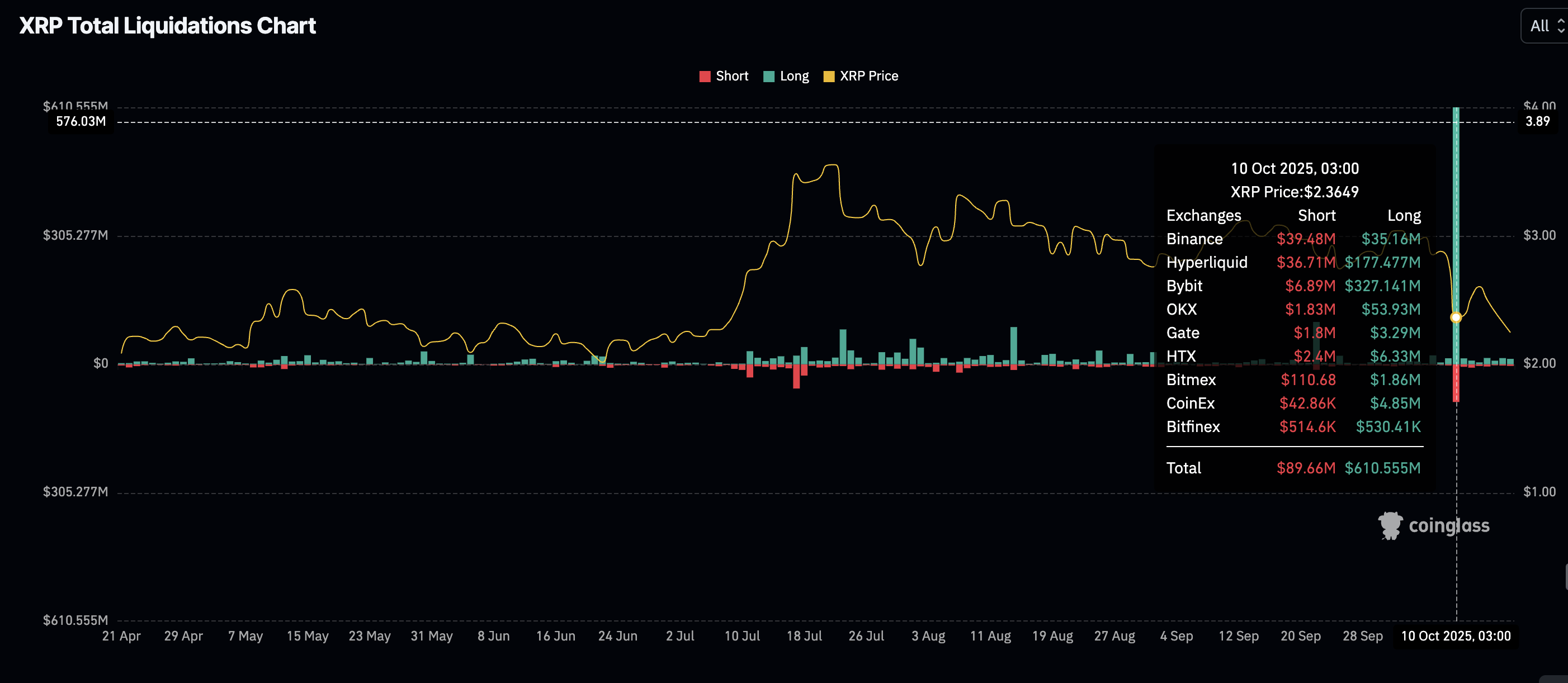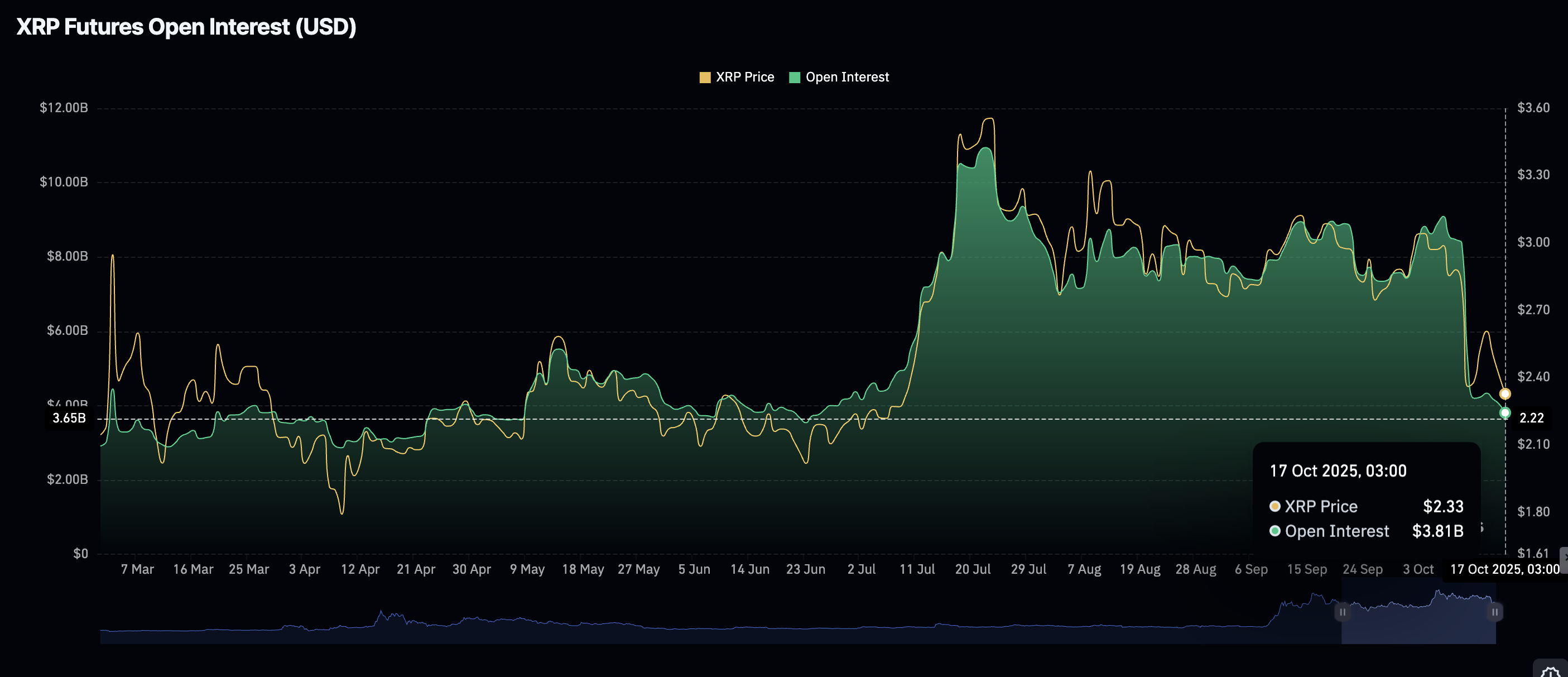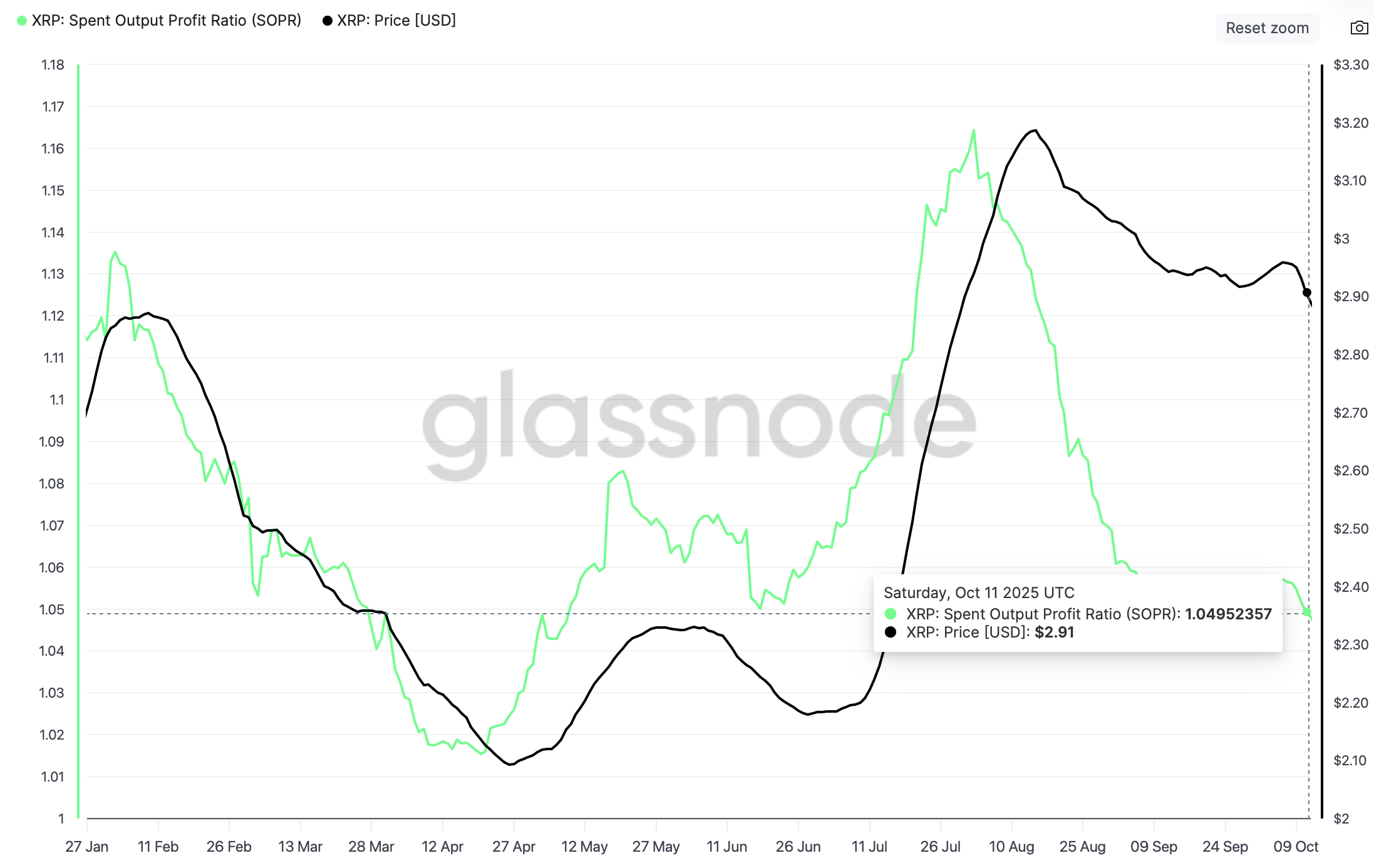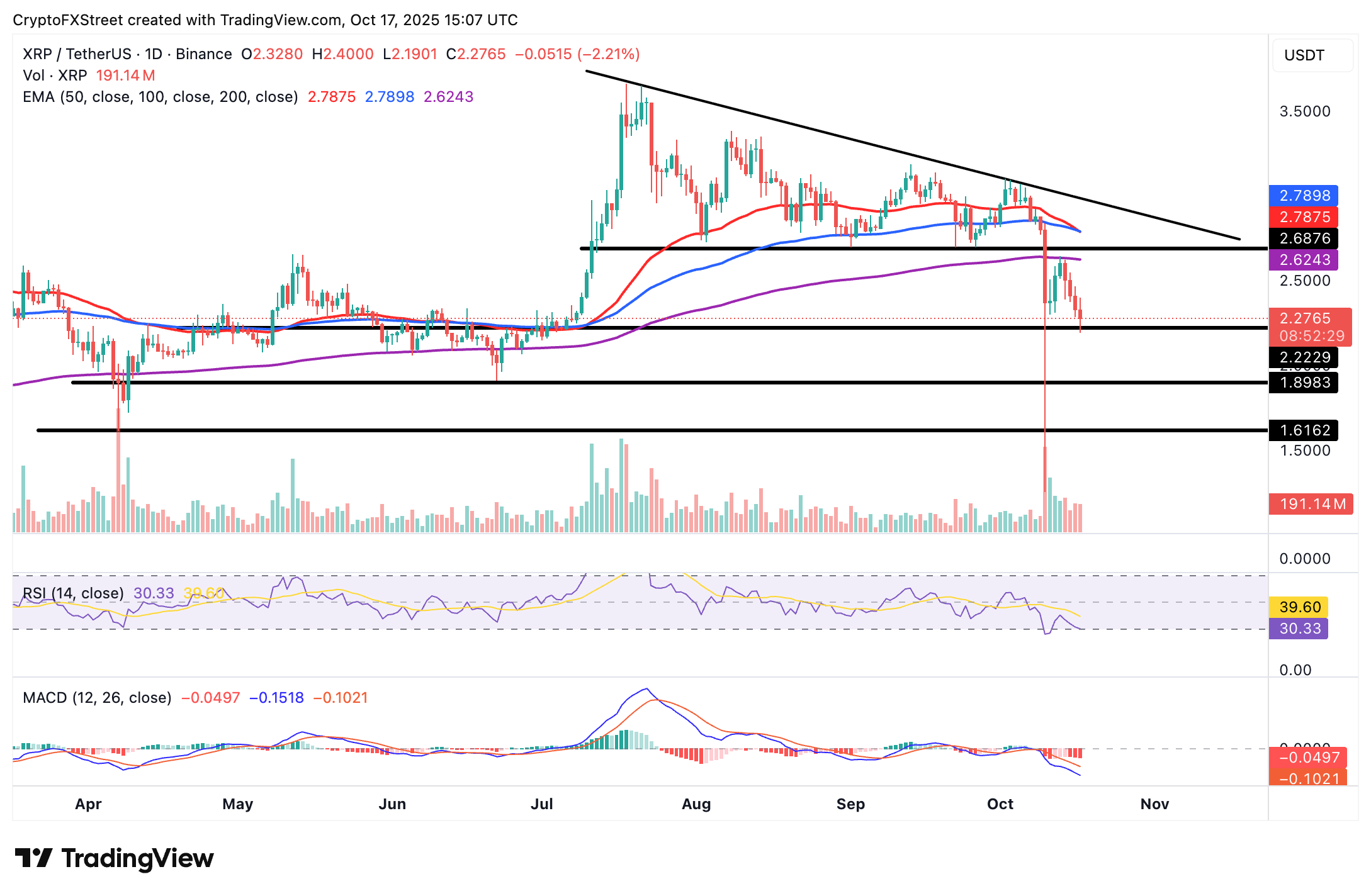Ripple Price Forecast: XRP deepens correction, targeting $2 as sentiment dims
- XRP falls for four consecutive days, moving in tandem with other crypto majors on Friday.
- Retail traders stay on the sidelines as the futures Open Interest dips below $4 billion for the first time since June.
- XRP SOPR metric drops toward 1.00 as crypto market capitulation persists, likely signaling a reset.
Ripple (XRP) is struggling to hold above a key support, trading at around $2.26 on Friday. The cross-border money remittance token has deepened its correction for four consecutive days amid a sticky bearish sentiment in the broader cryptocurrency market.
Concerns over macroeconomic uncertainty due to the trade standoff between the United States (US) and China, along with the lack of price catalysts in the cryptocurrency market, are contributing factors to the sell-off.
XRP shows weakness as retail demand shrinks
The sell-off on October 10 marked the largest deleveraging event in the history of the crypto industry, with liquidations totaling $611 million in XRP longs and $90 million in related short positions.

XRP Futures Liquidations | Source: CoinGlass
According to CoinGlass data, retail demand for XRP remains suppressed, as evidenced by a massive drop in the futures Open Interest (OI), which averages $3.81 million on Friday.
The OI is a measure of the notional value of outstanding futures contracts. It peaked at $10.94 billion after XRP achieved a new record high of $3.66 in mid-July. The persistent decline in OI suggests that the pool of XRP buyers is shrinking amid increasing bearish pressure.

XRP Futures Open Interest | Source: CoinGlass
XRP’s Spent Output Profit Ratio (SOPR), an on-chain metric used to gauge whether tokens are being sold at a profit or loss, has declined to 1.04, according to CoinGlass data.
The SOPR calculates the ratio of the price at which a spent output (transaction) was acquired compared to the price at which it was spent. An SOPR value above 1.00 implies that investor are selling their assets at a profit. On the other hand, a value below 1.00 shows that holders are selling in distress or realizing losses.
When the SOPR is falling toward 1.00, it signals a reset as market capitulation continues. In other words, weak hands are exiting their positions at a break-even point or realizing losses. In the process, this rids the market of excessive selling pressure, signaling a bullish contraction signal.

XRP SOPR | Source: Glassnode
The XRP SOPR has been falling since early August, when it peaked at around 1.16. An extended correction toward 1.00 would indicate low potential selling pressure, increasing the odds of a bullish reversal as the market stabilizes without downside momentum from profit-taking.
Technical outlook: XRP bears tighten grip
XRP declines consecutively for four days, mirroring negative sentiment surrounding the cryptocurrency market on Friday. Traders appear to be leaning bearishly, evidenced by the Moving Average Convergence Divergence (MACD), which has maintained a sell signal since October 9.
The Relative Strength Index (RSI) has also dropped to 30 from highs around 57 at the beginning of this month, indicating that bearish momentum is increasing.
For now, key areas of interest for traders are the immediate $2.22 support, the next demand zone at $1.90, which was tested in June, and the buyer congestion at $1.61, which was last tested in April.

XRP/USDT daily chart
Still, a knee-jerk reversal cannot be ruled out, especially with the RSI hovering above the oversold region. If sentiment across the market improves and investors buy the dip, XRP may reverse the trend, aiming for highs above the 200-day Exponential Moving Average (EMA) at $2.62 and the confluence resistance formed by the 50-day EMA and the 100-day EMA at $2.78.
Open Interest, funding rate FAQs
Higher Open Interest is associated with higher liquidity and new capital inflow to the market. This is considered the equivalent of increase in efficiency and the ongoing trend continues. When Open Interest decreases, it is considered a sign of liquidation in the market, investors are leaving and the overall demand for an asset is on a decline, fueling a bearish sentiment among investors.
Funding fees bridge the difference between spot prices and prices of futures contracts of an asset by increasing liquidation risks faced by traders. A consistently high and positive funding rate implies there is a bullish sentiment among market participants and there is an expectation of a price hike. A consistently negative funding rate for an asset implies a bearish sentiment, indicating that traders expect the cryptocurrency’s price to fall and a bearish trend reversal is likely to occur.

